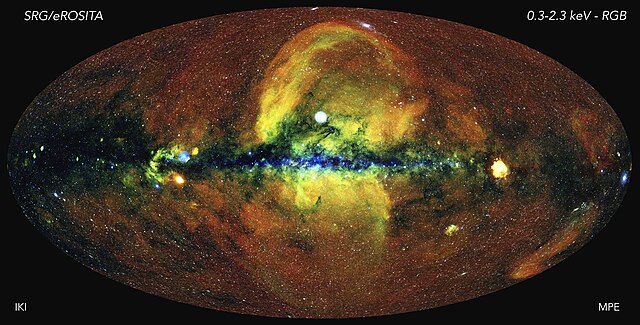Kepler-11, also designated as 2MASS J19482762+4154328, is a Sun-like star slightly larger than the Sun in the constellation Cygnus, located some 2,110 light years from Earth. It is located within the field of vision of the Kepler spacecraft, the satellite that NASA's Kepler Mission uses to detect planets that may be transiting their stars. Announced on February 2, 2011, the star system is among the most compact and flattest systems yet discovered. It is the first discovered case of a star system with six transiting planets. All discovered planets are larger than Earth, with the larger ones being about Neptune's size.
The orbit of the Kepler-11 planets in comparison to orbits of planets Mercury and Venus.
Cygnus is a northern constellation on the plane of the Milky Way, deriving its name from the Latinized Greek word for swan. Cygnus is one of the most recognizable constellations of the northern summer and autumn, and it features a prominent asterism known as the Northern Cross. Cygnus was among the 48 constellations listed by the 2nd century astronomer Ptolemy, and it remains one of the 88 modern constellations.
Cygnus as depicted in Urania's Mirror, a set of constellation cards published in London c.1825. Surrounding it are Lacerta, Vulpecula and Lyra.
Cygnus is superimposed as main stars constellation over a photo of the according section of the night sky
On the left image side are the bright North America Nebula (left bright part) with Sadr region (right bright part) in the Cygnus X region, visually interrupted by the Cygnus rift, of the Cygnus constellation, in this x-ray image.
The constellation Cygnus as it can be seen by the naked eye, with the Northern Cross in the middle.





